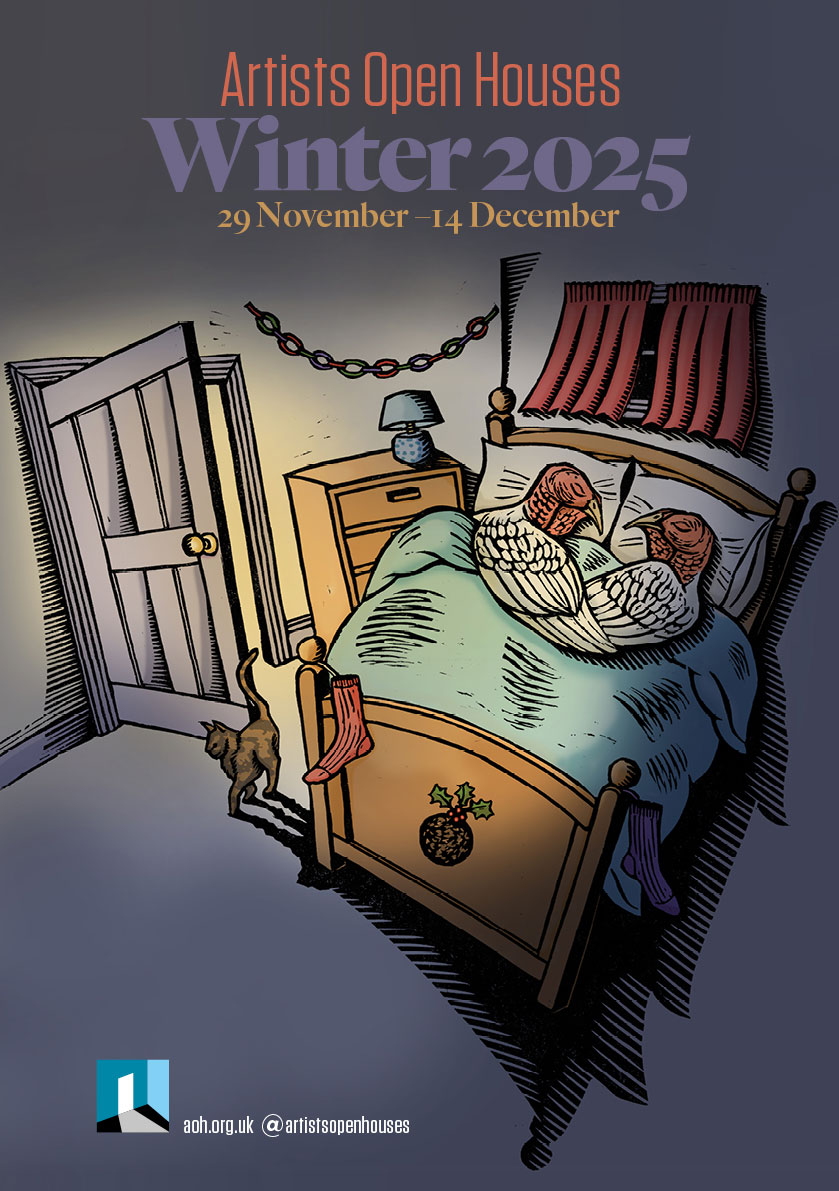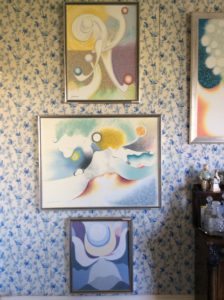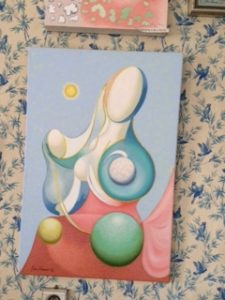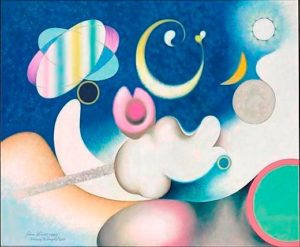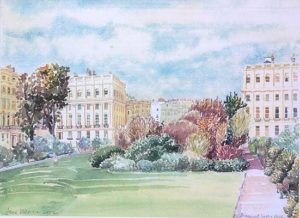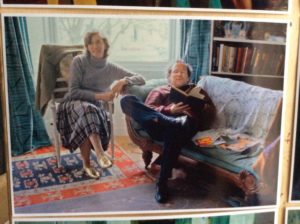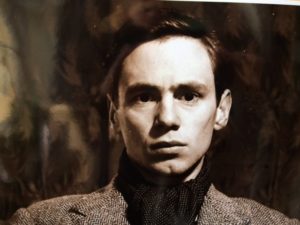A Celebration of the Classical work of John Weaver [1930-2018] complemented by the figurative work of Jane Weaver
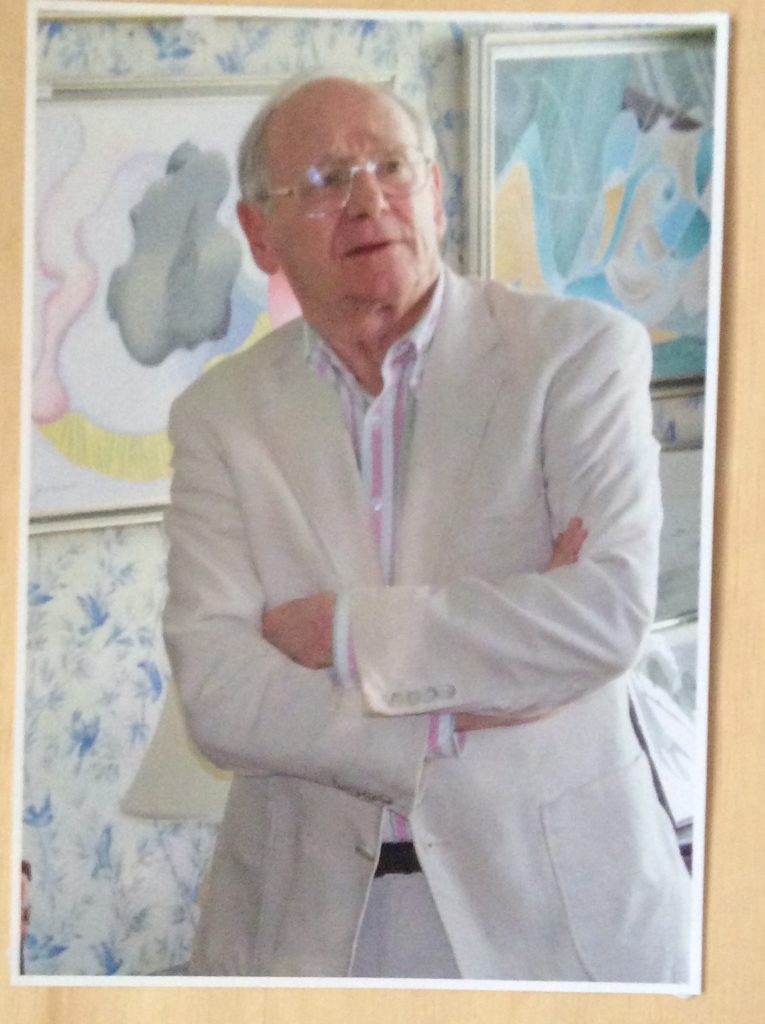
The Brunswick Trail Artists Open House May 2018
This year the John and Jane Weaver’s Brunswick Trail Open House will reopen again exhibiting John Weaver’s unique concept of space beyond earth, outside the solar system. It includes colour, composition and movement. His paintings are classical in composition, meaning that if you move something or took it away, the whole composition wouldn’t feel right when you looked at it – it would jar and lose its balance.
Jane Weaver’s work is figurative (you can tell what it is and where you are – reality as she sees it). Her collection includes her beautiful watercolours of landscapes which over the years she has been invited to do many demonstration classes for, and ‘still life’ along with many popular scenes of Brighton and Hove
John’s work is about emotions while Jane’s work is about aesthetics.
In addition, as part of John Weaver’s memorial, this year’s open house will have a small display of some to the photography, leaflets and letters John Weaver wrote back in 1974 for a campaign and petition he and his wife Jane led gaining 6000 signatures including those such as Sir Lawrence Oliver’s and Sire Nikolaus Pevsner to save their much loved and stunning Brunswick Terrace West which was up for demolition. But due to their love of aesthetics, and the remarkable renaissance architecture of the Brunswick Trail that surrounded them, it proudly stands there today.
My parents John and Jane Weaver took part in the open house for about 12 years. They then stopped in 2015 due to my father being unwell. After having dedicated their lives to art in, in retirement, the Artist’s Open House, Brighton has provided them with the magnificent opportunity to exhibit their art in their beloved Brunswick square home of 60 years and been an inexpressible finale to my father’s life. Every weekend my father had a crowd of people around him listening to him talking about his art:
Some sound bites
‘Art, when carried through to a conclusion has two basic and irrefutable components: the form and the content. That these two elements can be confidently stated and, I trust agreed upon, poses an interesting, and for me, enduring question:
If I were to separate the two and devote myself solely to the formal (composition) side of the equation, would the content (emotional side) reveal itself of its own accord? In short, enabling things to grow and enshrine themselves in the formal design?’ (John Weaver 2005
‘I have struggled for some time with the problem of ‘finding myself in my abstract paintings: this is by no means an easy approach to art, but it is as anyone knows who has experience in looking at art, a considerable difficulty. The meaning of the forms in any abstract painting is essential to an artist’s understanding of what he is doing. Art is not a matter of copying the nature of things as we know them in an everyday sense, but it is essential that the artist recognises himself in the forms that reveal themselves to be from the inner person. He doesn’t concern himself (figuratively) with what it is. It is truly the subconscious that makes the art.’ (John Weaver, 2015)
About the much loved painting ‘Equilibrium (Orbital Madonna)’
‘It is a special composition which has a definite meaning: Every item in the picture is related to its distance in the real world from the other elements. This is where the work arises.’
‘This is not a mere cosmic chance but an absolute orientation of every element within the frame. There is no question that this is crucial to the resolution of the final painting.’ It had to be absolute where each form manifests itself in exactly the right position. The rest of the painting shows its juxta position by which I mean it should speak for itself. It’s implicit to the total image.
About his pictures from one to the next
‘At this stage the colour is becoming stronger but, most importantly, more literal elements are making their presence felt. This establishes a shift towards surrealism since, the literal character of these elements are not intentional and are therefore subconscious. If I feel that something reminds me of this-or-that, in a pictorial sense, I simply bend it to fit my “Classical” design. For example, in picture no.6, (see below) it is not difficult to recognise that the yellow arc (centre top, on dark blue) resembles a base clef, on a musical score, albeit, in this case back-to-front. I recognise this, but by ignoring my perception of it as such and concentrating only on the shape, I was able to face-down this literal element and find the ‘watch-spring’ like tension in this spiral form’ (John Weaver, date unknown)
As when preparing for any exhibition, John and Jane Weaver worked as a team when preparing for the Open House and would completely convert their lounge into an art gallery, taking off doors, moving furniture and putting up stands. At the end of the exhibition days, they would be full of stories from the day. My father became quite well-known for not wanting to sell any of his paintings as the majority of them were part of his ‘Spatial Composition Collection’ each being a natural development of the previous. He was offered some good money for several of them such as the ‘Equilibrium Orbital Madonna’ and the ‘Galaxy (Arabesque)’, from visitors including a couple of people from galleries but he was reluctant to let go of them. People seemed astonished that he wouldn’t sell his work. For this reason my parents started to sell prints, Giclee prints on canvas and cards. My mother, however, has sold a lot of her originals over the years.
With respect to the important role the Brighton Artists Open House has played in my parents’ lives, it has been for them, about art for art’s sake. Inviting people in their lovely Brunswick home, at no cost, to enjoy their art whilst listening to them, the artists talk about the real meaning behind their art. And more importantly, not only has it been a very inspiring way to spend their retirement but one which they have always looked forward to and thoroughly enjoyed doing.
In addition, the Artists Open House Brunswick Trail was a particularly poignant finale to my father’s relationship with Brunswick Square. As back in the 1974, he and Jane started a campaign and a petition in our front room to save the beautiful Brunswick Terrace West from demolition by the property developers who had recently bought it. My father has kept a file complete with all the letters he wrote to the Hove Civic society and the Regency society and the council amongst others along with all the research and the photographic leaflets he did in those days to ensure the safeguarding of Brunswick Terrace West. My parents collected 6000 signatures and eventually saved the terrace. Today, their lovely Brunswick square is complete with all its terraces.
Quotes from a letter to Nikolaus Pevsner :
‘The entire block shown in our leaflet, has been in the hands of property developers for some two or three years and there is, as yet, no visable sign that there is the will or the available money to save these buildings from decay.’(John Weaver 1974)
To the council of Hove, the town clerk and their Principal officers
‘As these buildings become older and more historic and as Brighton and Hove become increasingly international towns, the asset of these buildings makes the matter of their constant preservation of great aesthetic and therefore commercial value’. (John Weaver, 1974)
My parents first moved down to Brunswick Square, Brighton from Wolverhampton 60 years ago as my father had been offered a job on the local Newspaper – the Argus. Following this, he worked as a Graphic artist and photographer running and setting up his own studio – Serif studio in Hove for many years. They instantly fell in love with the remarkable Brunswick Square which was like a Greek Temple.
After finishing her degree my mother Jane Weaver won second prize in the Giles Bequest Competition organised by the Victoria and Albert Museum where the print is in the permanent collection. She chose to teach art mainly in adult education due to her favouring serious art which, for her worked better with adults and did this for 40 years. She was fairly well known in the Brighton art world in those days as she used to organise exhibitions, especially a very democratic exhibition she ran for many years in which any artists could enter their work at the Friends Centre in Brighton.
My father worked side by side with her and hung the hundreds of their exhibitor’s paintings.
Jane and John Weaver have become part of the Brunswick Square, Brighton, history.
Visit The House:
https://aoh.org.uk/house/paintings-john-jane-weaver/
